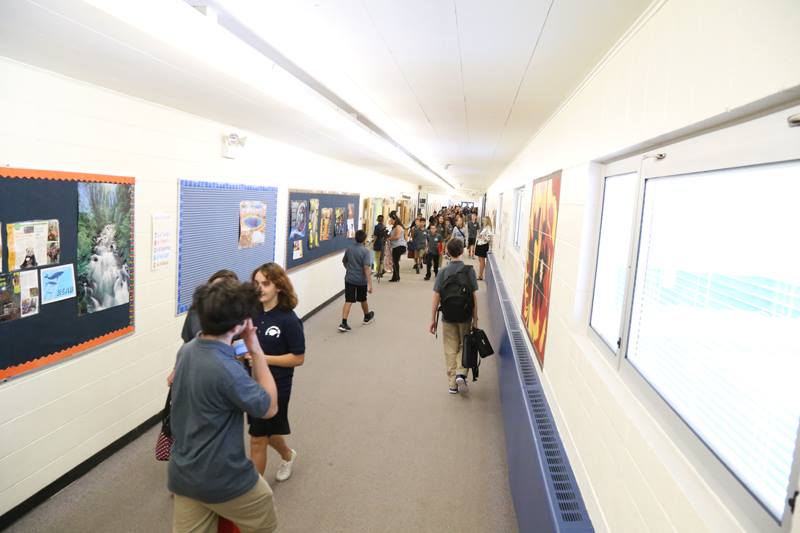For some Washoe County students, summer this year includes additional schooling as the district attempts to address learning loss and the feared summer slide.
This year’s summer school program, hosted by the Washoe County School District, is benefitting from American Rescue Plan money known as the Elementary and Secondary School Emergency Relief (ESSER) Fund. Nevada districts have received about $1 billion from the fund.
The district launched a universal summer program last year with the money that any student could attend. This year’s program is longer and more tailored to students who need it the most.
The district offers summer opportunities for high schoolers to get ahead in their studies. On the other hand, elementary and middle school students are focusing on their reading, writing and math skills for four weeks as they get ready for the coming school year.
“They are working on remedial skills to help build and maintain the learning that they have already gained, because a lot of learning loss happens in the summer,” said Virginia Briggs, the site facilitator for summer school at Mt. Rose K-8 School of Languages. “We want to make sure we continue and maintain those skills, possibly even add on skills, so they’re more prepared for that next grade level.”
Thirty-five elementary and middle schools are operating as hubs throughout the county.
In Southern Nevada, the Clark County School District has slated a little over three-fourths of its $777.8 million ESSER funds to projects focused on student success, including $69 million for summer learning programming, according to a May 17 presentation.
Administrators and teachers emphasized the importance of making summer school fun and accessible for those students. Veronica Rodriguez said she loves that she has more leeway to integrate subjects like Spanish, science and art into the curriculum than she does during the school year.
“I really like how it’s more flexible in summer school. So regularly, we have to connect our art with whatever curriculum we are teaching,” said Rodriguez, a first-grade teacher at Mt. Rose. “But now, since it’s free choice, I get to create my own art based on what they love.”
Her summer students are all performing below grade level, according to evaluations made by their teachers based on test scores and report cards. Summer school is one strategy the district uses to help close that achievement gap.
Beth Martin, the summer school zone supervisor for West Reno, explained how children can fall behind.
“Some students, when they start out school, they are a little bit behind,” she said. “So you’re always trying to get kids that are a little bit behind caught up so that by the time they leave your grade, they’re ready for their next grade.”
While the program is meant to reduce summer learning loss, staff also noted that the district is still trying to address pandemic-related learning loss and some students’ spotty attendance.
Rodriguez is also experiencing summer school as a parent this year. Her third-grade daughter is working on improving her reading skills.
“She’s with a small group of readers reading the same book, and she says that she’s more confident reading because it’s a smaller group,” Rodriguez said.
That focused attention may be fleeting, however. This program might not last in its current state forever because it relies on federal COVID-19 funds.
“There probably isn’t more ESSER funding coming, and then it will be done and needs to be spent by September of 2024. So we’re operating under a real time crunch because this funding expires,” said Adriana Publico, the ESSER project manager for the district. “We want to spend it all. We don’t want to give any back to the federal government. We also know that our students need help now.”
This article was shared with Noticiero Móvil by our local partner, KUNR Public Radio. Jose Davila IV is a corps member for Report for America, an initiative of the GroundTruth Project, and reports for KUNR. The Nevada Independent contributed to this report.
